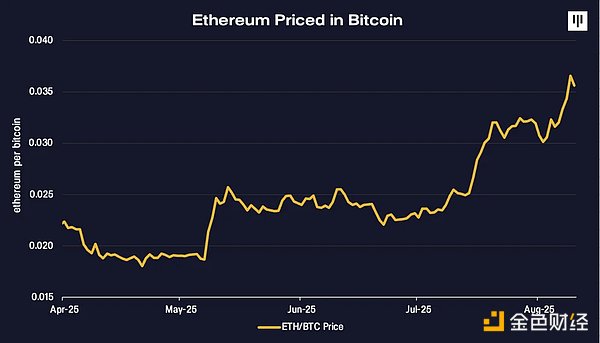Author: Erik Lowe, Head of Content at Pantera Capital; Translated by: Golden Finance
Bitcoin tends to lead bull market cycles, while altcoins lag behind in the early stages. As the cycle progresses, altcoins tend to gain momentum and outperform Bitcoin at the end of the cycle. We call these the "first phase" and "second phase" of the bull market.
Importantly, altcoins contributed the majority of value creation in the past two cycles. In the 2015-2018 cycle, altcoins contributed 66% of the total growth in cryptocurrency market capitalization. In the 2018-2021 cycle, altcoins contributed 55%.
So far in this cycle, altcoins have accounted for 35% of the total market growth. Bitcoin has long benefited from regulatory clarity—both in its commodity classification and its well-known role as "digital gold." This has been a key driver of Bitcoin's outperformance compared to altcoins early in this cycle. Until recently, altcoins have historically faced greater regulatory uncertainty. Under the new US administration, this landscape is shifting, with significant progress being made in promoting innovation in digital assets. The clarity and tailwinds that have historically favored Bitcoin are now extending to altcoins, and the market is beginning to reflect this. As regulatory victories continue to accumulate, momentum is building. Last month, President Trump signed the GENIUS Act, creating the conditions for a flourishing of US-regulated stablecoins, which are expected to become the engine of global financial transactions. The House-passed CLARITY Act aims to establish a clearer distinction between digital commodities and securities, helping to resolve the long-standing jurisdictional uncertainty between the US SEC and the Commodity Futures Trading Commission (CFTC). A transformation is underway, and there is reason to believe that alt-coins will be among the biggest beneficiaries. Innovation and development are accelerating, particularly in the tokenization space. Robinhood recently launched equity tokens powered by Arbitrum, aiming to democratize stock trading and create more efficient markets. Major US banks such as Bank of America, Morgan Stanley, and JPMorgan Chase are exploring issuing their own stablecoins. BlackRock's BUIDL fund has accumulated $2.3 billion in tokenized Treasury bonds. Figure has processed over $50 billion in blockchain-native RWA transactions. In addition to its tokenized Treasury bond fund, Ondo plans to list over 1,000 tokenized stocks on the NYSE and Nasdaq through Ondo Global Markets. On-chain migration is ongoing. Ethereum Drives Non-Bitcoin Market Share Growth The majority of real-world assets are flowing into Ethereum. Of the $260 billion stablecoin market, 54% are issued on Ethereum. 73% of on-chain treasuries are on Ethereum. Debit Addresses (DATs) are accumulating ETH at an unprecedented rate. Wall Street is gradually waking up to this, and demand for ETH is soaring. Ethereum's price, denominated in BTC, has risen 103% since its bottom in April 2025.

 Kikyo
Kikyo






